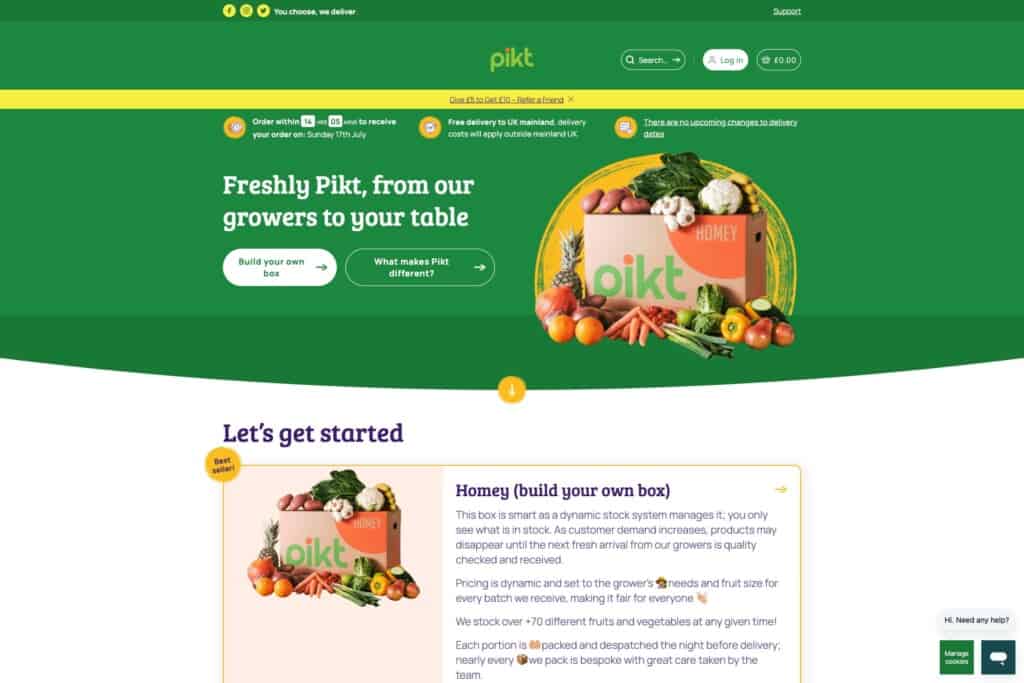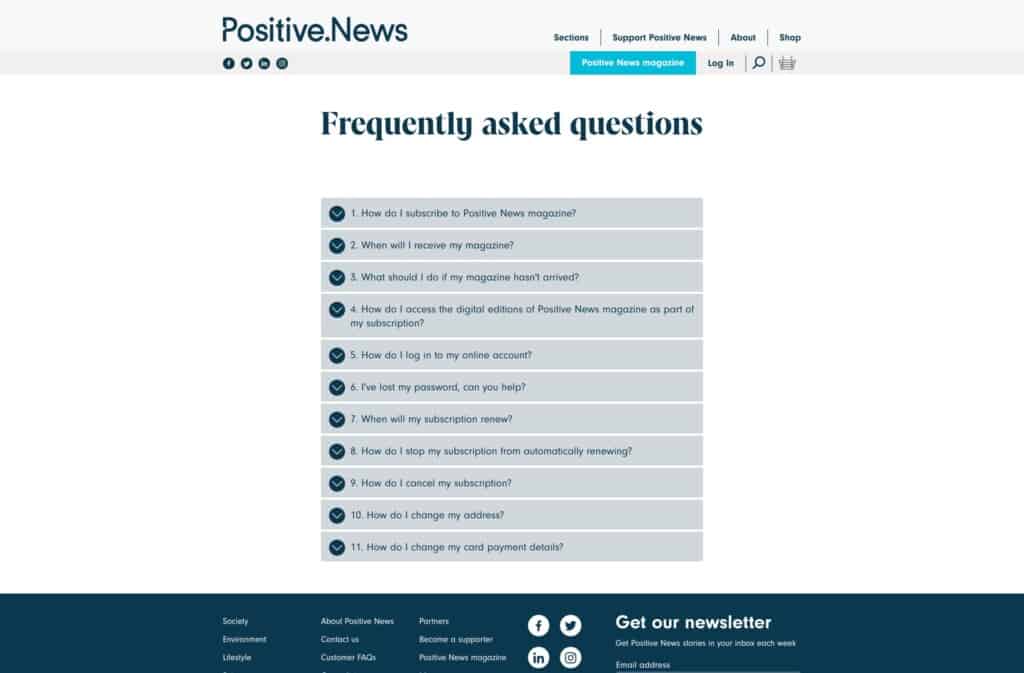How technology can help us create customer experiences that feel human
What if we told you that you could provide an eCommerce experience that feels more human? You can harness the power of technology, AI and machine learning tools to better understand, anticipate and cater to human needs.
The phrase artificial intelligence is often associated with machines that lack an understanding of human behaviour. But, when applied correctly, it has potential to create much better experiences for customers.
By using the latest technology to gather insights on consumer behaviour, you can predict future patterns and gain a deeper understanding of your customers.
When you combine this knowledge with an inclusive, accessible website design, you can create personalised eCommerce experiences that look and feel even more human.
What to read on for…
In this blog post, we’ll walk through examples and opportunities to:
-
Create inclusive, accessible, intuitive websites
-
Reduce customer frustrations with transparency
-
Use AI and analytics to improve eCommerce
We’ve got news for you
Sign up to our newsletter for the latest industry news, insights and trends delivered straight to your inbox.
Creating inclusive, accessible, and intuitive websites
Customers want their human needs to be met, even when they are interfacing with technology – like when they are shopping online.
Monitor what makes your customers tick. Their needs, wants, frustration and expectations. Once you have this information, some key things to consider in your website design are:
- Inclusivity:
Are you using imagery that represents your customer base? Do your online forms contain sufficient options, or options to self-describe? Does your copy use inclusive language?
- Accessibility:
Can your website be accessed by people with visual impairments or disabilities?
- Intuitive design:
Does the design anticipate customers’ needs and remove points of frustration?
Reducing customer frustrations with transparency
Try to eliminate any points during the eCommerce journey that have the potential to create friction:
- Out-of-stock items
- Lengthy checkout processes
- Unclear delivery information
- Lack of important information
These can all be sources of frustration, particularly if they are not picked up on quickly.
How to reduce frustrations
Reducing frustrations involves setting clear expectations around products and services, and communicating important information early on in the customer journey.
This could be presented as a banner on your homepage advising customers of delivery delays. Even better; a machine learning solution that works with your inventory system to predict demand around products, reducing the possibility of customers trying to purchase goods that aren’t in stock.
You can also use machine learning to enhance your logistics workflows and to improve communication around delivery times and costs. Higher-than-expected extra costs such as shipping or taxes are the number one reason customers abandon shopping carts during the checkout process.
Help build trust in your brand and leave your customers with a positive impression by using features like:
- Shipping calculators using customer postcodes
- Tracking systems that provide real-time updates
- Customer email or text updates
- Clarity around any items that are out of stock
Live out-of-stock notice for Elizabeth Shaw
A large part of our work with clients involves ongoing website improvements and optimisation based on their needs, which inevitably change and evolve over time. Luxury chocolate brand Elizabeth Shaw is one client that receives this service, through our Always Evolving® model.
We recently added a live out-of-stock notice for Elizabeth Shaw. When a product is out of stock, this notice displays on product listing pages or search results before customers click through to product pages.

This improvement saves customers time and allows them to focus their attention on products they know are available, reducing frustration and contributing to a more positive user experience.
20% AOV increase for Elizabeth Shaw
Read our case study to learn more about how we’ve been working with our luxury chocolate client, Elizabeth Shaw.
Clear delivery information and site-wide banner for alerts from Pikt
Having accurate delivery information is particularly important when dealing with products with a limited shelf life. This was a key consideration for our clients Pikt, whose business model is centred around supplying boxes of fresh, organic produce to customers at affordable prices.
When optimising the delivery page of their website, the delivery information for each postcode was made easily visible and findable, setting clear expectations early in the customer journey.

Pikt is also able to utilise a site-wide banner to give crucial updates. For example, “DPD is dealing with unprecedented demand for its services; this is causing some postcodes to receive boxes later than normal. Please click here to check your postcode.”
This simple design tweak allows Pikt to offer greater visibility over their workflows and provide reassurance to customers that their needs matter.
Clarity throughout the bidder’s journey for The Grand Appeal’s auction
Setting clear expectations around delivery timeframes doesn’t just apply to the delivery page of your website. Having this information clearly visible on your homepage, and at various other points during the journey, allows your customers to make informed purchase decisions from the get-go.
As part of our work with Bristol-based charity The Grand Appeal, we set up a digital home for The Grand Aard Auction, which allowed supporters to bid on artworks donated by local organisations and artists.

Each product page contained an ‘Additional Information’ tab that informs users of UK shipping costs and offered the option of a personalised quote for international bidders. This minimised the number of clicks required to learn of information that was essential to a bidder’s decision-making.
The homepage copy highlighted important dates during the auction, and timeframes were clear on both the homepage and product pages. Current bid information was also readily visible so potential bidders could make informed choices.
Award-winning collaboration with an inspirational charity
Read our case study to learn more about our multi-award winning work with The Grand Appeal.
Answers to common enquiries for Positive News
Gathering data on common customer enquiries can help inform the content of your FAQ page.
Combining this with an intuitive design, a conversational tone and SEO-friendly keywords can eliminate frustrations and free up time and resources for customer service staff to focus on more complex enquiries.

You can see an example of this on the FAQ page from our client, Positive News, the first media organisation in the world dedicated to quality, independent reporting about what’s going right.
Delivering world’s most uplifting news to more readers
Read our case study to learn more about how we’ve been working with Positive News.
Looking to the future: Using AI and analytics to improve eCommerce
Investments in AI technology have more than quadrupled in the past few years. It’s easy to see why – according to industry experts, businesses incorporating AI into their eCommerce strategy are likely to see more than a 25% improvement in customer satisfaction, revenue or cost reduction.
Conversations about AI and machine learning tend to focus on what human tasks have the potential to be outsourced to machines. But it creates more opportunities than it takes away.
By taking advantage of more sophisticated analytics tools and machine learning software that anticipates your customers’ needs, you can free up time and resources.
This is true for both:
- Your customers:
who don’t have to work as hard to shop with you
- Your staff:
who can focus their attention on more complex tasks, leading to a more positive eCommerce experience for everyone
In our recap of WooCommerce’s company conference, where our team was recently invited to share our own insights on stage, we explored was AI and the ways it could enhance the eCommerce experience by:
- Creating product images
- Generating product descriptions
- Using historic trends to forecast demand for stock
- Auto-generating alt text used by screen readers
Takeaways
To recap…
- You can harness the power of AI and machine learning tools to understand, anticipate and cater to human needs
- When used the right way, these tools can help you create websites that are inclusive, accessible and intuitive
- You can also improve your user experience by providing greater transparency around inventory and streamlining logistics workflows
- eCommerce companies are investing big in AI, and this trend is likely to continue well into the future
The most important thing to remember when improving your website is that the eCommerce sector is always growing and changing, as are the needs of your customers. After all, it’s only human to need a change every once in a while.
Your website is a investment, not a business expense
We offer a range of ongoing services designed to make your website work harder for you.